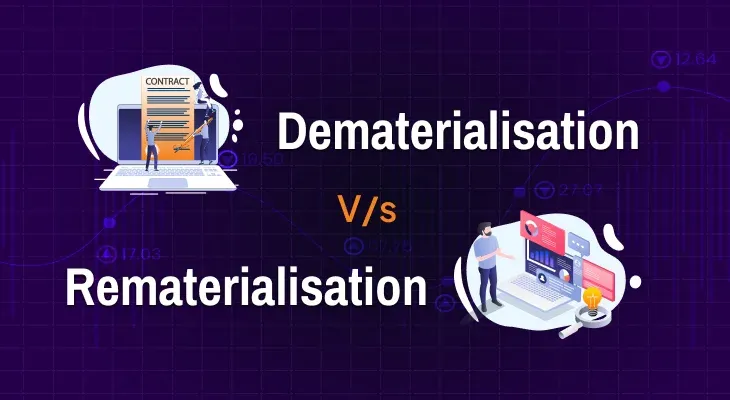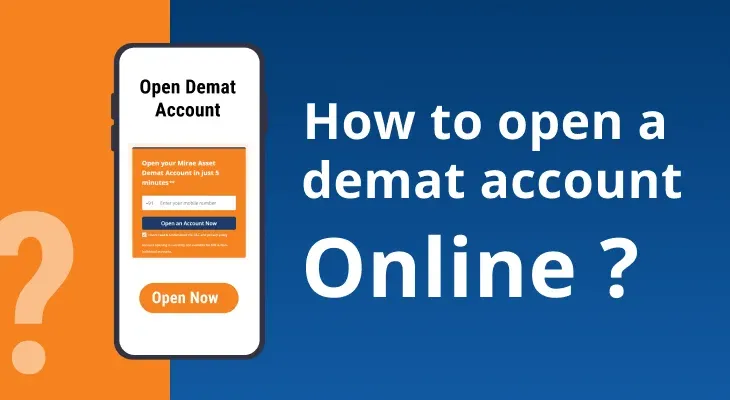
Dormant Demat Account Reactivation
What Is A Dormant Demat Account?
A demat account is an online account that holds your shares and securities in a digital format. It allows you to trade and invest in the stock market without the hassle of physical certificates. However, if you do not use your demat account for a long time, it may become dormant or inactive. This means that you cannot access or operate your account until you reactivate it. This article helps you to know how to activate dormant demat account online and how to reactivate demat account.
Know Why Dormant Demat Accounts Turn Inactive
A demat account may become dormant for various reasons, such as:
You have not made any transactions or movements of securities in your account for a specified period, usually three to five years, depending on your depository participant (DP) or broker.
You have not updated your KYC (Know Your Customer) details or submitted the required documents to your DP or broker.
You have not paid the annual maintenance charges or any other dues to your DP or broker.
What Are The Disadvantages Of A Dormant Demat Account?
A dormant demat account can have some drawbacks, such as:
You may incur unnecessary charges for maintaining an account that you do not use.
You may miss out on the benefits and opportunities of the stock market, such as dividends, corporate actions, price appreciation, etc.
You may face the risk of fraud or misuse of your account by unauthorised persons who may access your account details and sell your shares without your consent.
Know How To Reactivate Dormant Demat Account
If you want to resume trading and investing in the stock market, you need to reactivate your dormant demat account. The process is simple and involves the following steps:
Open your m.Stock account.
A pop-up button will appear after you login.
Click on the “Re-activate my account”button.
You will receive a mail with the reactivation form.
Download and fill the reactivation form and send the necessary documents, such as identity proof, address proof, PAN card and bank account details for re-KYC to 1st Floor, Tower 4, Equinox Business Park, LBS Marg, Kurla (W), Mumbai – 400 070.
Once your documents are received, you will be intimated via email.
Complete your eKYC journey and settle any pending dues or negative cash balance in your account.
You will receive a confirmation once your account is reactivated. This may take from 7 to 10 working days. You can then access and operate your account as usual.
How to Avoid Getting Your Demat Account Dormant?
To avoid your demat account from becoming dormant again, you should keep it active by following these tips:
Log in to your demat account at least once in six months to check your status and holdings.
Make regular transactions or movements of securities in your account, such as buying, selling, transferring, pledging, etc.
Update your KYC details and documents whenever there is a change in your personal or financial information.
Pay the annual maintenance charges and any other dues to your DP or broker on time.
Monitor your account statements and transaction alerts and report any discrepancies or unauthorised activities to your DP or broker immediately.
Wrapping Up
A dormant demat account is a waste of money and opportunity. It is better to reactivate it and use it to trade and invest in the stock market. The process of reactivation is easy and quick. You just need to contact your DP or broker, fill a form, submit documents, complete KYC, settle dues, and get confirmation. Once your account is reactivated, you can enjoy the benefits and convenience of a demat account. However, you should also keep your account active by logging in, making transactions, updating KYC, paying charges, and monitoring your account regularly.
FAQ
What is a dormant demat account?
A dormant demat account is a demat account that has not been used for a long time, usually three to five years, depending on the broker or depository participant (DP) policy. A dormant demat account may incur maintenance charges, be vulnerable to fraud, and miss out on market opportunities.
How to reactivate a dormant demat account?
To reactivate a dormant demat account, you need to contact your broker or DP and request for reactivation. You also need to fill a reactivation form, submit the required documents, complete the KYC requirements, sign an agreement, and settle any pending dues or negative balance in the account. The reactivation process may take 7 to 10 business days and may or may not involve a reactivation fee.
What are the benefits of reactivating a dormant demat account?
By reactivating a dormant demat account, you can resume your trading and investment activities in the stock market. You can also access your holdings, receive dividends, participate in corporate actions, and benefit from price appreciation of your securities.
How to prevent a demat account from becoming dormant?
To prevent a demat account from becoming dormant, you need to keep it active by making transactions regularly. You also need to log in to your demat account once in six months to check your status and holdings. Additionally, you need to update your information and details with your broker or DP whenever there is a change.
Can I open a new demat account if I have a dormant demat account?
Yes, you can open a new demat account even if you have a dormant demat account. However, you need to disclose your existing demat account details to the new broker or DP and comply with the KYC norms. You also need to pay the maintenance charges for both the accounts. Alternatively, you can close your dormant demat account and transfer your holdings to the new demat account.


